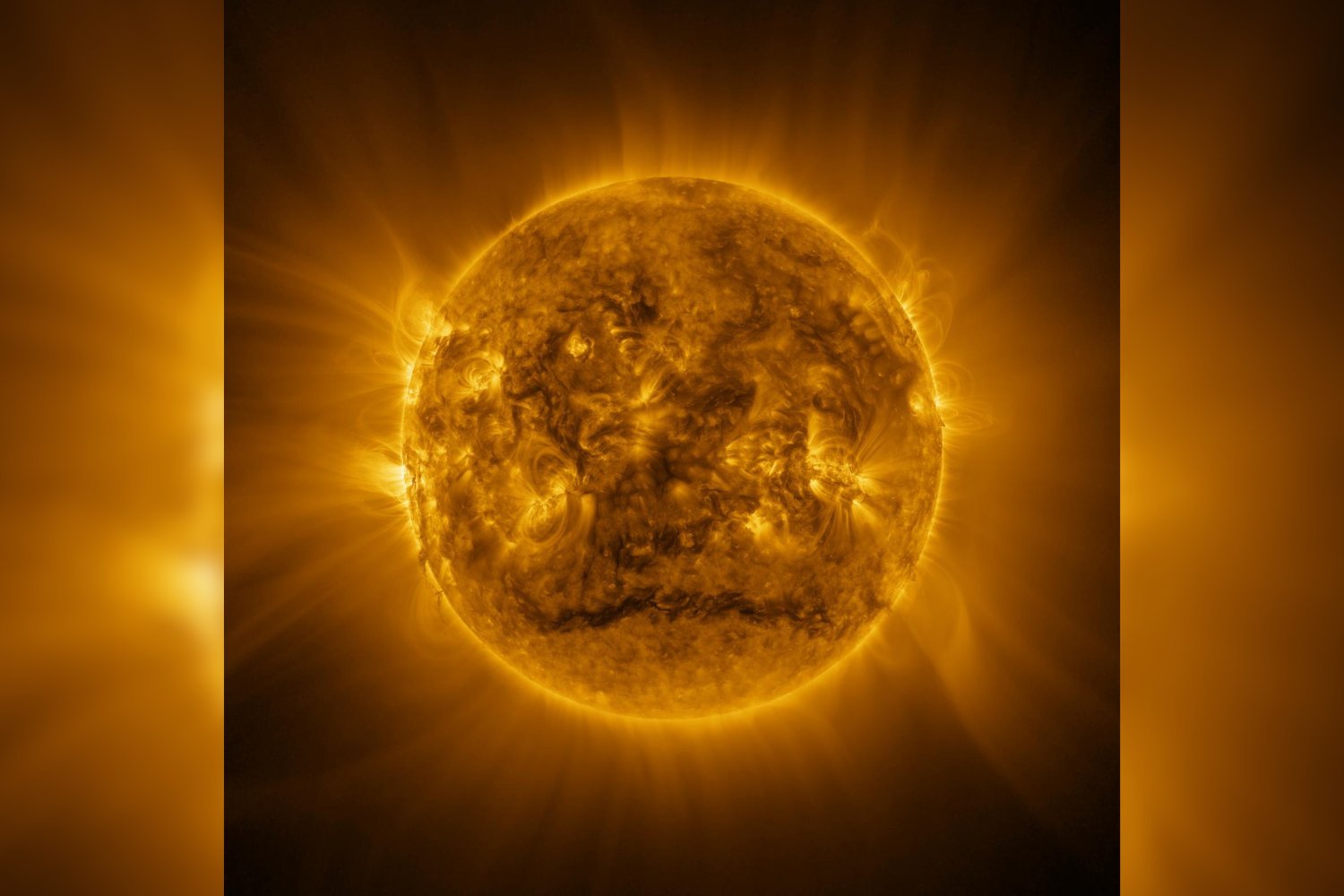Five years into its mission, NASA and ESA’s Solar Orbiter just snapped what might be the crispest, most detailed full-Sun view humanity has ever seen.
The shot above—in all its mesmerizing, dull-yellow grandeur—captures our Sun’s million-degree corona in ultraviolet light.
Taken on March 9, 2025, from about 47.8 million miles (77 million kilometers) away, this image isn’t a single pretty picture. In fact, it’s a mosaic—stitched together from 200 individual shots of the Sun, each of them captured by the spacecraft’s Extreme Ultraviolet Imager (EUI). The result is a 12,544-by-12,544-pixel megaportrait that lets you zoom in (on the ESA site) and nerd out like never before.
As detailed on the site, the image showcases some fundamental components of our solar host. The tendrils shooting out from the sphere are the solar atmosphere—the corona—at wavelengths far beyond what our eyes can see. Closer to the solar surface are dark, filamentous prominences—solar plasma—arcing with the Sun’s magnetic field. The prominences are roughly 18,000 degrees Fahrenheit (10,000 degrees Celsius), a far cry from the million-degree corona.
The dark band across the front of the Sun—making it look like an ominous, fiery frowny face—is a solar filament. The brighter spots on the face of our star are active regions on its surface—the source of solar flares and coronal mass ejections—and on the right side of the star you can see coronal loops, also arcing with the magnetic field.
The joint Solar Orbiter mission is part of a larger effort to decode the chaotic dynamics of the solar atmosphere—including how magnetic fields twist, snap, and sometimes launch solar storms that can mess with satellites and power grids back home.
While this image dazzles our naked eyes, it’s also rich in data for researchers chasing questions about solar heating, plasma behavior, and space weather forecasting.
But let’s be real: It’s also just cool as hell. We sent a spacecraft close enough to the Sun to capture its piping hot winds and live to tell the tale. Beyond that, it’s paying back the favor with gloriously high-res imagery. Hang it in the Louvre.




